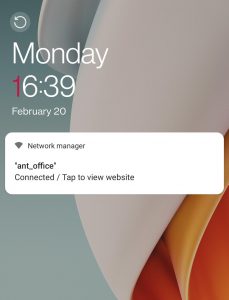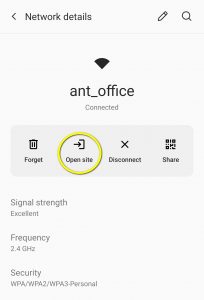CapPort Support on ANTlabs Gateways
Improving Captive Portal Detection and Venue Published Information for better visibility
Captive portals are commonly used by public Wi-Fi networks to restrict access to the internet until the user agrees to certain terms and conditions or authenticates successfully. While captive portals are necessary for many public Wi-Fi networks, they can be frustrating for users who are unable to connect to the internet until they have completed the login process.
Frustrations can stem from captive portals not loading fast enough or freezing, and some login methods can be lengthy or complicated. Thankfully, ANTlabs gateways provide a plethora of seamless login methods, including social media login, SMS OTP, PMS integration, Hotspot 2.0, etc to suit many usage scenarios. CapPort support on ANTlabs gateways offers an elegant solution to the other aspect of the problem, while providing improved captive portal detection and venue published information.
Improved Captive Portal Detection

ANTlabs gateways support the use of DHCP option 114 to indicate the captive portal API URL during IP address assignment. This means that supported devices can immediately fetch the API content after connecting to the network, which prompts the user to log in if the network is identified as captive based on the API response. There is no need to redirect or intercept the initial web requests that would trigger security warnings in modern browsers or delay the delivery of captive portals.
In other words, CapPort support on ANTlabs gateways enables faster and more accurate reliable detection of captive portals, and greatly improve the user experience and reduce frustration. The diagram on the left shows an example of an Android phone’s locked screen showing the visual cues to allow the user to click the captive portal URL.
Venue Published Information for Better Visibility
 In addition to improving captive portal detection, CapPort support on ANTlabs gateways also enables venue published information. Without this feature, after a user is successfully authenticated, they are free to move to other web content and the venue will lose the opportunity to engage with the customer further.
In addition to improving captive portal detection, CapPort support on ANTlabs gateways also enables venue published information. Without this feature, after a user is successfully authenticated, they are free to move to other web content and the venue will lose the opportunity to engage with the customer further.
When a CapPort message is displayed on a device using captive portal API, the user can interact with it to immediately open their internet browser and navigate to the Venue Info URL at any time. This feature is particularly useful in scenarios such as staying at a hotel, where guests may want to easily access information about services or amenities. By simply clicking on the system message, users can access venue information, including spa, restaurant hours or any promotions offer. With the addition of location-aware websites, the guest journey becomes even more intuitive and seamless. The diagram on the right shows the user interface where a user can find the venue URL by clicking on the “Open Site” icon.
It is worth noting that more mobile devices are beginning to support CapPort feature, specifically Apple (iOS 14 and macOS Big Sur) devices and Android 11 onward.
Conclusion
In conclusion, CapPort support on ANTlabs gateways is a powerful tool for improving captive portal detection and providing venue published information. By using DHCP option 114 to provide the captive portal API URL and including the Venue Info URL in the CapPort message, CapPort support streamlines the process of connecting to public Wi-Fi networks and provides users with easy access to important information about the venue. As a result, CapPort support can lead to increased customer satisfaction, repeat business, and revenue for businesses.
